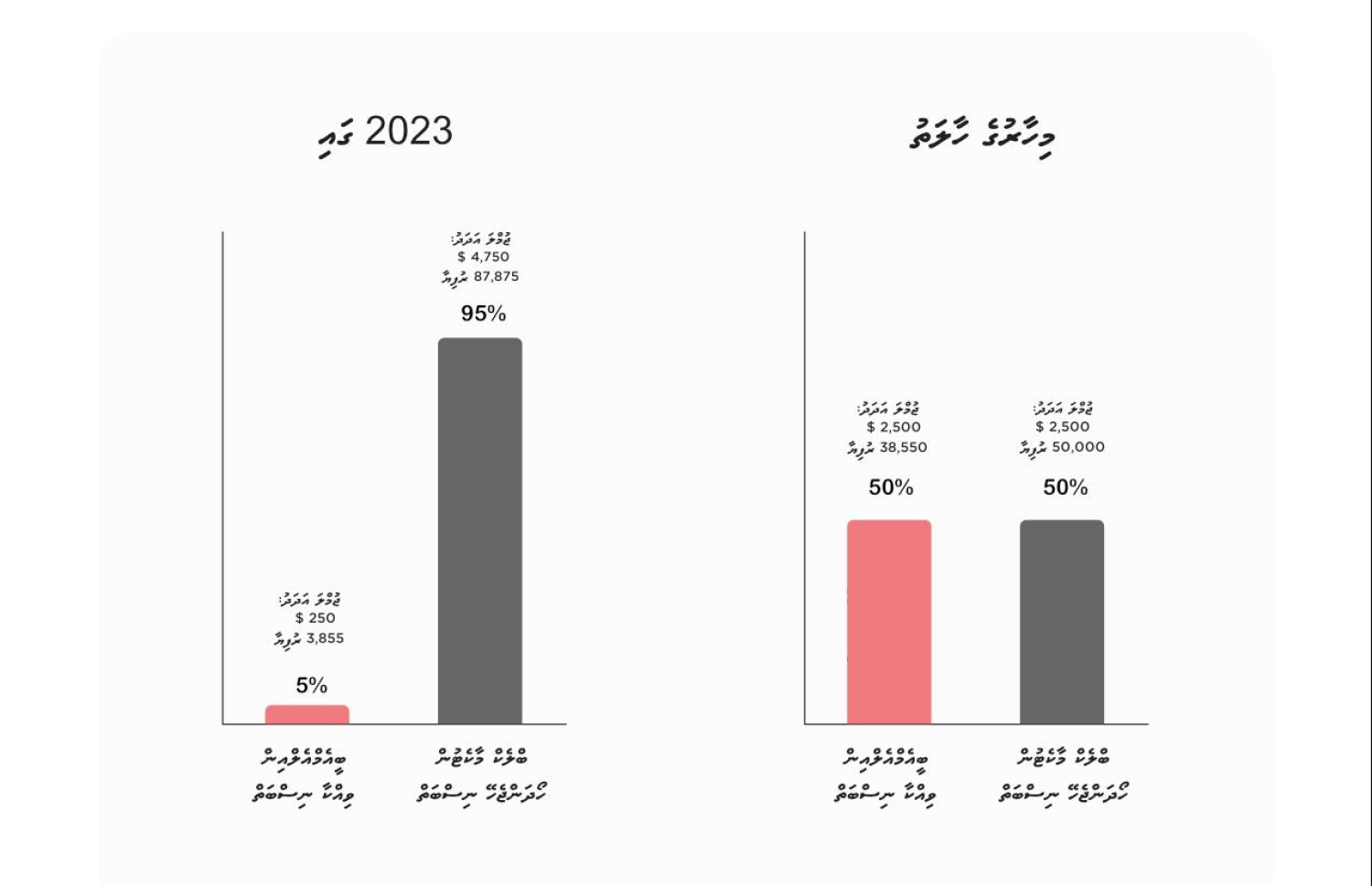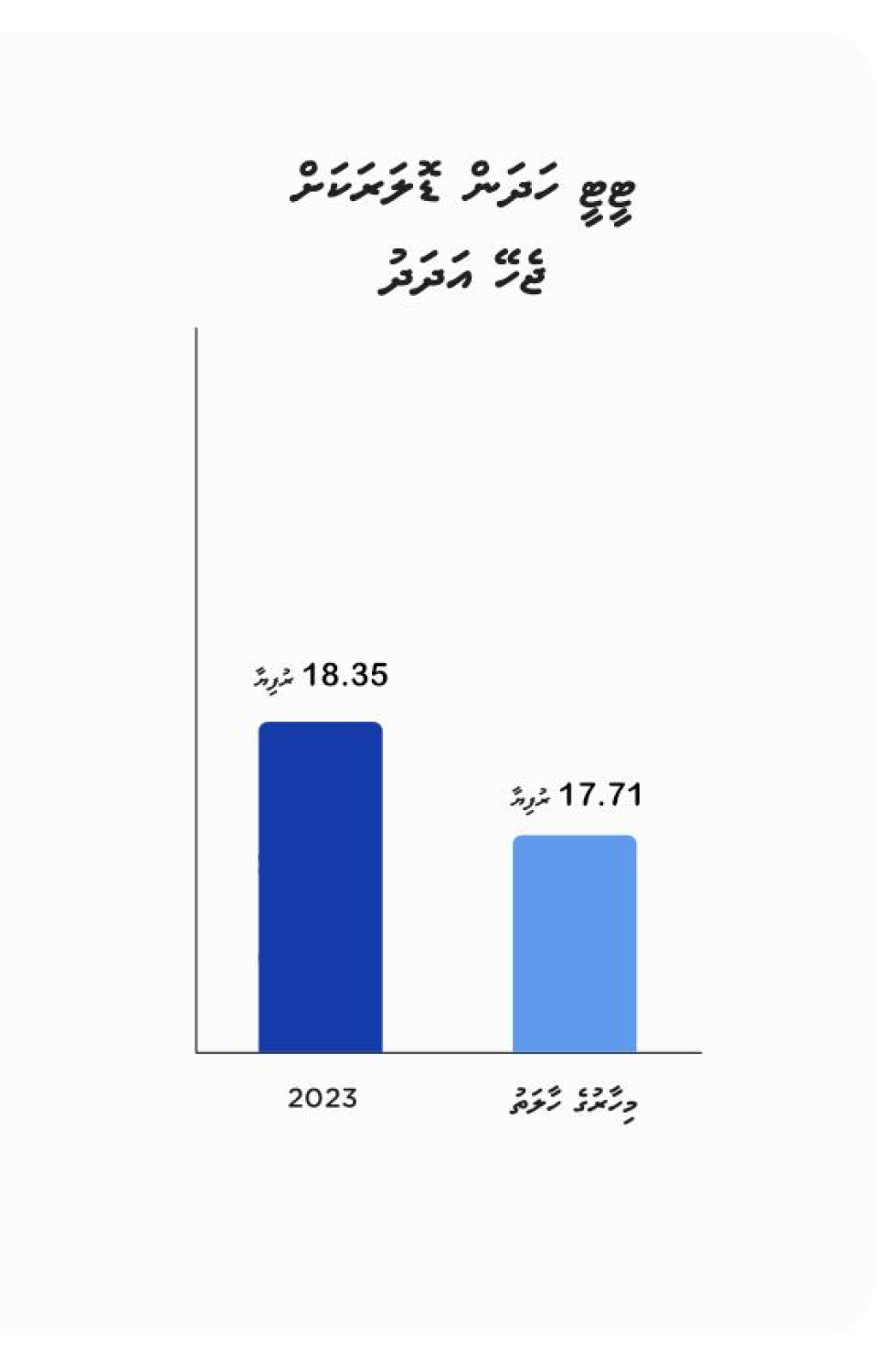Apples and oranges, one of the most widely sold fruits in the Maldives, remained relatively affordable for a long time, even during periods of steady demand. In fact, prices sometimes fell due to increased supply. But recently, both apples and oranges have become among the most expensive fruits on the market.
The rising cost of fruits and vegetables is often linked to the rising price of the US dollar. Both street vendors and food importers point to the appreciation of the dollar as a major reason for price hikes.
Dollar support for businesses; Then vs Now
In the past few years, small and medium businesses in the Maldives received only about 5–10 percent of their dollar needs through official channels like the Bank of Maldives (BML). Most had to rely heavily on the black market to make international transfers (TTs).
To address this, BML started increasing its support in July last year, first up to 30 percent, and recently up to 50 percent of the TT amount for businesses. This has made a noticeable difference in the actual cost of obtaining dollars.
Let’s break this down with a USD 5,000 transfer example:
2023 Situation: Only 5 percent from BML
- BML rate (5 percent of USD 5,000 = USD 250 at MVR 15.42): MVR 3,855
- Black market (95 percent of USD 5,000 = USD 4,750 at MVR 18.50): MVR 87,875
- Total MVR spent: MVR 91,730
- Average cost per dollar: MVR 18.35
2025 Situation: 50 percent from BML
- BML rate (50 percent of USD 5,000 = USD 2,500 at MVR 15.42): MVR 38,550
- Black market (50 percent of USD 5,000 = USD 2,500 at MVR 20): MVR 50,000
- Total MVR spent: MVR 88,550
- Average cost per dollar: MVR 17.71
This shows that the cost of acquiring dollars has actually decreased for businesses, thanks to better access to the official exchange rate.
In a worst-case scenario, where no official dollars are available and the entire USD 5,000 must be bought at the black market rate of MVR 20, the cost rises to MVR 100,000, up from MVR 87,875 at the MVR 18.50 rate. That’s a rise of 8 percent.
So why have apples and orange prices doubled?
Despite only an 8 percent increase in black market dollar rates, the price of apples has more than doubled. If the rise in apple and orange prices were purely based on exchange rates, they should have only gone up by around MVR 1.50 per kg, not the large jump we've seen.

This suggests that other factors are at play.
During the pandemic, when the dollar rate dropped significantly, apple prices still peaked between MVR 6–7 per piece. Today, even with some improvement in dollar access, apple prices have climbed much higher, indicating that exchange rate fluctuations alone do not explain the spike.
Psychological pricing and market behavior
The black market rate, while not always the main source of dollars, has become a powerful psychological factor. It sets expectations and is often used to justify price increases, whether or not they're economically justified.

While businesses do face genuine challenges, using the economic crisis as a cover to sharply raise prices places an unfair burden on ordinary people. In a country that imports over 90 percent of its food, it’s important to look beyond just the dollar rate and question what else might be driving up cost.